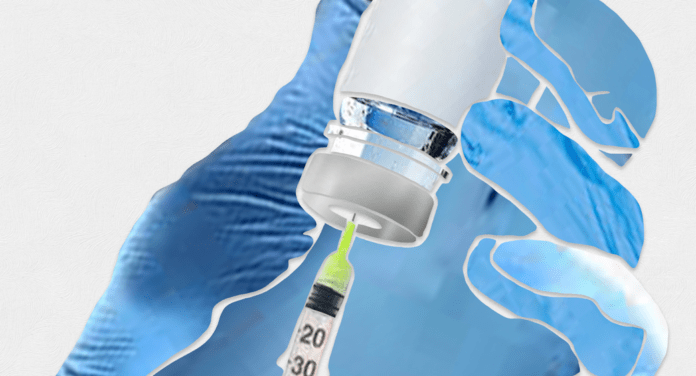
The fast pace at which various laboratories are working on vaccines against Covid-19 carries both promise and peril. On Monday, Moderna Therapeutics Inc. announced the first reported data from human trials, and they are positive.
That’s good news, and it arrived sooner than expected. But the parts of the project that lie ahead will be harder to accomplish with speed.
Eight patients who received low and medium doses of the Moderna’s candidate vaccine appear to have developed antibodies capable of neutralizing the new coronavirus.
The company didn’t have detailed data on the rest of the 45 trial participants, but all generated at least some antibodies. It was early data from a small study, though, and the limited results don’t prove that the vaccine provides broad and durable protection.
Also, while there were no serious safety issues, three patients who received the highest dose of the vaccine briefly suffered modest “flu-like symptoms” after their second injection.
For this vaccine to succeed, tests ahead will need to demonstrate that it can indeed protect people from Covid-19 for an extended period, and that it will prevent substantially more harm than it causes. The bar is especially high for vaccines, because they’re given to healthy people — a Covid-19 vaccine, in particular, could be given to billions of healthy people. Of course, there’s pressure to move quickly. But some parts of the vaccine development process simply cannot be rushed.
Moderna and other companies that have created vaccine candidates in record time have been able to speed early stages of the process — for instance, by compressing animal experiments — and they plan to keep hurrying by testing higher-risk patients earlier than usual and by starting more extensive efficacy trials while smaller safety studies are still running. The Trump administration’s new Operation Warp Speed aims to help by building significant manufacturing capacity for candidate vaccines even before they prove successful.
But there are limited ways to shorten the large randomized human trials that will be needed to assess any vaccine’s safety and effectiveness.
One way to try to move faster is to use so-called surrogate endpoints — that is, to measure certain biomarkers of the drug’s effectiveness rather than wait for hard data from patient outcomes. You might look, for example, at the number of antibodies that subjects generate after trying the vaccine. This evidence can demonstrate which specific candidates or doses are worth pushing forward. However, it isn’t enough for approval. Only clinical data from a large and varied population can establish how much protection a vaccine can safely provide, and for how long.
Such trials take time, in part because so much needs to happen before the data are complete. It could take months for enough of the subjects who are given placebos to be infected with the coronavirus — to demonstrate by comparison the vaccine’s effectiveness. And public health efforts may inadvertently slow this process, if they are able to delay or minimize a second wave of the disease.
Human challenge trials, in which healthy volunteers are deliberately exposed to a virus in order to assess a vaccine rapidly, could also speed things up by identifying the most promising vaccine candidates. Even so, it makes sense to run trials on a diverse set of possible vaccines, ranging from Moderna’s novel RNA-based option to more traditional inactivated viruses. Multiple good alternatives are going to be needed to meet the historic challenge of inoculating the world against Covid-19, and some will turn out to be easier to manufacture and distribute than others.
Vaccine studies need to be large especially to establish safety. Immune systems vary enormously from person to person, which means that it’s easy for a mostly safe vaccine to provoke an occasional adverse reaction. Cutting corners on clinical trials boosts the risk that bad reactions could emerge as use expands.
Moderna’s early safety data reveal nothing that would prevent broad use of its vaccine. In future trials, including a large pivotal test scheduled to begin in July, the company plans to use a middle-size dose, which should theoretically lower the risk of side effects. But if this dose produces anything worse than scattered and transient unpleasant symptoms, the vaccine may not be approvable.
Regulators will need to determine exactly how much safety data is enough, based on input from both research scientists and clinicians. Despite the world’s urgent need, this reasoning will need to be guided by the evidence as it comes in, not by any wished-for calendar date.
